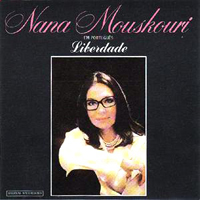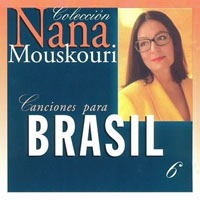

Portuguese Repertoire


Her unique album in Portuguese was released in 1986, after Spain and Portugal joined the European Economic Community. For Nana, the moment came to reconnect with the public of these two countries. As this was a first, her producer André Chapelle decided to make her record two identical albums; one in Spanish and one in Portuguese. Before, during and after the recording sessions, Nana started to study both languages in order to understand what she sings and to talk a little. For the nine Portuguese titles, she appealed to the lyricists Tozé Brito and António Tavares-Teles. In 1997 and 1998, the album was reissued on CD. In Brazil, it bears the title "Cancao para o Brasil" and in the United States, "Canciones para Brasil".
LIBERDADE "Liberdade", the title, the first song and the translation of her greatest success in France, is the most famous of the album. Its promotion was ensured. In Portugal, it came out on a single and Nana recorded a video clip in Portuguese, in Spanish and in English which was then sent to the television stations all over America. In this video, Nana sings before children strolling with torches, working on scaffolding and unveiling a model of the Statue of Liberty. At the very end, its torch is illuminated. |
 |
Nana loves Brazilian music. Indeed, throughout her career, she has adapted several standards in other languages. Let us think about "Dindi" (1963), "A garota de Ipanema" (La fille d'Ipanéma - 1964), "Luar do sertão" (Die Nacht mit dir - 1965), "Ave Maria no morro" (1991) and "Manhã de Carnaval" (A day in the life of a fool - 1993). Just before her debut concert in Brazil in 1996, Nana declared to the press that she would like to record an album of Brazilian composers. Can we still hope? More recently, she sang again in Portuguese. With the samba singer Martinho Da Villa, she recorded two duets, "Um dia tu verás" (Un jour tu verras - 2005) and "Canta canta minha gente" (Quand tu chantes - 2011). These ones alternate with French or German.